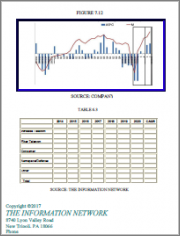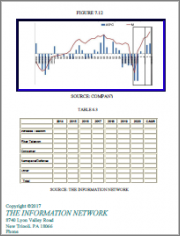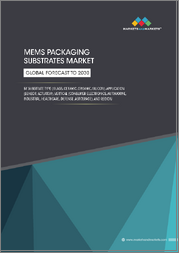
|
시장보고서
상품코드
1803015
세계의 3D 반도체 패키징 시장 예측(-2032년) - 재료별, 기술별, 최종 사용자별, 지역별 분석3D Semiconductor Packaging Market Forecasts to 2032 - Global Analysis By Material (Organic Substrate, Bonding Wire, Leadframe, Encapsulation Resin, Ceramic Package and Other Drug Types), Technology, End User and By Geography |
||||||
Stratistics MRC에 따르면 세계의 3D 반도체 패키징 시장은 2025년 116억 9,000만 달러로 추정되고, 예측 기간 동안 CAGR 18.7%로 성장할 전망이며, 2032년에는 388억 1,000만 달러에 이를 전망입니다.
3D 반도체 패키징으 여러 반도체 다이를 하나의 패키징에 수직으로 통합하여 효율성, 기능성 및 컴팩트성을 향상시키는 최첨단 기술입니다. 실리콘 관통 비아(TSV), 마이크로 범프, 고도의 상호 연결을 활용함으로써 기존의 2D 방식보다 고속, 저소비 전력, 고밀도를 실현합니다. AI, 가전, 고성능 컴퓨팅 등의 분야에서 널리 사용되는 이 패키징 기법은 확장성, 에너지 효율, 설계의 다양성을 향상시킵니다.
IoT Analytics GmbH의 State of IoT Summer 2024 보고서에 따르면 IoT 디바이스는 2023년까지 166억 대에 이르렀으며 2022년 대비 15% 증가했습니다.
소형화 및 소비자용 전자기기에 대한 수요 고조
소비자들이 소형화되고 고성능인 디바이스를 점점 더 요구하게 됨에 따라 스마트폰, 웨어러블, IoT 용도 전반에서 소형화된 전자기기 수요가 급증하고 있습니다. 이 동향은 칩의 수직 적층을 가능하게 하는 3D 반도체 패키징의 채용을 촉진하고 기능을 강화하면서 디바이스의 실적를 축소하고 있습니다. AI 및 5G 기술의 보급은 고속 데이터 처리 및 저지연을 지원하는 고급 패키징 솔루션의 필요성을 더욱 높여 왔습니다. 제조업체는 이러한 진화하는 요구 사항을 충족하기 위해 이기종 통합 및 관통 전극(TSV) 기술에 투자하고 있습니다. 소비자용 전자기기 부문은 에너지 효율적인 다기능 디바이스에 대한 기대가 높아지는 가운데 여전히 주요 성장 엔진입니다.
복잡한 설계 및 통합 프로세스
그 이점에도 불구하고, 3D 반도체 패키징는 복잡한 설계와 제조 공정을 포함하여 심각한 과제를 초래합니다. 적층시의 미스 얼라인먼트, 열 관리의 문제, 상호 접속의 신뢰성 등은 수율이나 성능에 영향을 미치는 일반적인 장애물입니다. 이러한 복잡성은 특수 장비, 숙련된 엔지니어링 및 엄격한 테스트 프로토콜을 필요로 하며 제조 비용을 증가시킵니다. 중소기업은 필요한 연구개발 및 설비투자를 따라잡는 데 어려움을 겪고 시장 진입이 제한될 수 있습니다. 또한 다양한 유형의 칩을 하나의 패키지에 통합하면 호환성과 표준화 노력이 복잡해집니다. 그 결과, 3D 패키징에 대한 기술적 요구는 업계 전반에 걸쳐 광범위한 채용을 계속 제약하고 있습니다.
헬스케어 기기 및 스마트 웨어러블에서의 이용 확대
헬스케어 및 웨어러블 기술 분야에서는 소형의 고성능 디바이스를 실현하기 위해 3D 반도체 패키징의 채용이 진행되고 있습니다. 섭취 가능한 센서, 심박 조율기, 진단용 웨어러블 등의 용도는 3D 집적 공간 절약으로 에너지 효율적인 특성의 혜택을 누리고 있습니다. 향상된 열 관리 및 데이터 처리 능력으로 이러한 패키지는 실시간 건강 모니터링 및 원격 진단에 이상적입니다. 원격 의료 및 디지털 건강 플랫폼이 확대됨에 따라 스마트 의료용 전자 제품에 대한 수요가 세계적으로 증가하고 있습니다. AI를 탑재한 바이오센서와 개별화된 건강 추적 혁신은 이러한 동향을 더욱 가속화하고 있습니다. 헬스케어 및 일렉트로닉스의 융합은 3D 패키징 기술에 유망한 프론티어가 됩니다.
장기적인 디바이스 성능에 대한 신뢰성 우려
3D 반도체 패키징, 특히 미션 크리티컬 용도에서는 장기 신뢰성이 여전히 중요한 우려사항이 되고 있습니다. 열 스트레스, 일렉트로 마이그레이션 및 재료의 시간 경과에 따른 열화는 장치의 무결성과 성능을 손상시킬 수 있습니다. 패키징 밀도가 높아짐에 따라 일관된 상호 연결 품질과 방열을 확보하는 것이 어려운 과제가 됩니다. 제조업체는 이러한 위험을 줄이기 위해 첨단 재료 및 예측 테스트에 투자해야 합니다. 신뢰성 문제를 해결할 수 없으면 소비자의 신뢰가 떨어지고 헬스케어 및 자동차와 같은 민감한 분야에서 채택이 지연될 수 있습니다. 견고한 라이프사이클 성능의 필요성으로 인해 업계는 보다 엄격한 품질 기준과 패키징 탄력성 혁신을 향하고 있습니다.
COVID-19의 영향 :
COVID-19의 대유행은 세계의 반도체 공급망을 혼란시켜 첨단 패키징 기술의 생산과 기술 혁신을 늦추었습니다. 봉쇄 및 여행 제한은 장비 설치 및 노동력 확보를 방해하여 제조 스케줄을 지연시켰습니다. 그러나 이 위기는 또한 헬스케어, 원격 근무 및 디지털 인프라에서 탄력적인 전자 제품의 중요성을 부각시켰습니다. 원격 의료, 스마트 디바이스, 클라우드 컴퓨팅이 필수적이 되어 컴팩트하고 고성능인 칩에 대한 수요가 급증했습니다. 이러한 변화는 소형화 및 에너지 효율을 지원하는 3D 패키징 솔루션에 대한 투자를 가속화했습니다.
예측 기간 동안 유기 기판 부문이 최대가 될 전망
유기 기판 부문은 비용 효과 및 다용도로 예측 기간 동안 최대 시장 점유율을 차지할 것으로 예측됩니다. 일반적으로 에폭시 수지로 만들어진 이러한 기판은 적층 반도체 다이에 우수한 전기 절연성 및 기계적 지지를 제공합니다. 이 유연성은 열 안정성과 신호 무결성을 유지하면서 여러 칩을 집적할 수 있습니다. 작고 빠른 장치에 대한 수요가 증가함에 따라 유기 기판은 3D 패키징 아키텍처의 신뢰할 수 있는 기반이 됩니다. 제조업체는 생산 규모를 확대하고 성능과 지속가능성 목표를 달성하기 위해 첨단 재료에 투자합니다. 이 부문의 이점은 효율적이고 확장 가능한 3D 반도체 솔루션을 구현하는 데 중요한 역할을 한다는 것을 반영합니다.
예측 기간 동안 소비자용 전자기기 부문의 CAGR이 가장 높을 것으로 예측됩니다.
예측 기간 동안 스마트 디바이스 및 웨어러블 수요 증가에 따라 소비자용 전자기기 분야가 가장 높은 성장률을 보일 것으로 예측됩니다. 소비자는 성능이 향상되고 컴팩트한 디자인의 다기능 가젯을 요구합니다. 3D 패키징은 프로세서, 메모리 및 센서를 더 작은 실적에 통합할 수 있게 하고 이러한 기대에 부응합니다. 5G와 AI를 탑재한 애플리케이션의 전개는 모바일과 홈 일렉트로닉스의 기술 혁신을 더욱 촉진하고 있습니다. 제조업체는 고급 패키징을 활용하여 보다 빠르고 에너지 효율적이며 몰입감 있는 경험을 지원하는 제품을 제공합니다. 디지털 라이프 스타일의 진화에 따라 가전은 3D 반도체 패키징의 가장 급성장하는 용도 분야로 계속될 것으로 보입니다.
가장 높은 점유율이 있는 지역 :
예측 기간 동안 아시아태평양은 견고한 반도체 제조 생태계에 견인되어 최대 시장 점유율을 차지할 것으로 예측됩니다. 중국, 한국, 대만과 같은 국가들이 칩 제조 및 패키징 기술 혁신을 이끌어 세계적인 투자를 모으고 있습니다. 컴팩트한 전자기기에 대한 높은 소비자 수요와 강력한 OEM의 존재는 이 지역의 성장을 더욱 강화하고 있습니다. 디지털 인프라와 선진 제조업을 추진하는 정부의 이니셔티브가 3D 패키징 기술의 채용을 가속화하고 있습니다. 이 지역의 이점은 모바일 기기의 생산과 수출에서의 리더십에 의해서도 강화되고 있습니다. 아시아태평양은 반도체 패키징의 진보와 시장 확대의 진원지로 계속되고 있습니다.
CAGR이 가장 높은 지역 :
예측 기간 동안 북미가 가장 높은 CAGR을 나타낼 것으로 예측되며 왕성한 연구개발 활동 맟 고성능 컴퓨팅 수요에 뒷받침되고 있습니다. 미국은 AI, 클라우드 인프라, 방위 전자 분야에서 선도하고 있으며, 모두 첨단 패키징 솔루션이 필요합니다. 반도체 제조 및 혁신 허브에 대한 전략적 투자는 지역 전체의 성장을 가속하고 있습니다. 학계, 신흥 기업 및 업계 선도적인 협업은 3D 통합 및 이종 패키징에서 혁신을 가속화하고 있습니다. 자율 시스템, 스마트 헬스케어, 엣지 컴퓨팅의 등장이 시장 기회를 더욱 확대하고 있습니다. 북미는 최첨단 기술에 주력하고 있으며 3D 반도체 패키징 분야에서 가장 빠르게 성장하는 지역입니다.
무료 맞춤형 서비스
이 보고서를 구독하는 고객은 다음 무료 맞춤설정 옵션 중 하나를 사용할 수 있습니다.
- 기업 프로파일
- 추가 기업의 종합적 프로파일링(3개사까지)
- 주요 기업의 SWOT 분석(3개사까지)
- 지역 구분
- 고객의 관심에 응한 주요국 시장 추계, 예측 및 CAGR(주 : 타당성 확인에 따름)
- 경쟁 벤치마킹
- 제품 포트폴리오, 지리적 존재, 전략적 제휴에 기반한 주요 기업 벤치마킹
목차
제1장 주요 요약
제2장 서론
- 개요
- 이해관계자
- 분석 범위
- 분석 방법
- 데이터 마이닝
- 데이터 분석
- 데이터 검증
- 분석 접근
- 분석 자료
- 1차 조사 자료
- 2차 조사 정보원
- 전제조건
제3장 시장 동향 분석
- 성장 촉진요인
- 성장 억제요인
- 시장 기회
- 위협
- 기술 분석
- 최종 사용자 분석
- 신흥 시장
- 신형 코로나 바이러스 감염(COVID-19)의 영향
제4장 Porter's Five Forces 분석
- 공급자의 협상력
- 바이어의 협상력
- 대체 제품의 위협
- 신규 진출기업의 위협
- 기업간 경쟁
제5장 세계의 3D 반도체 패키징 시장 : 재료별
- 유기 기질
- 본딩 와이어
- 리드 프레임
- 밀봉 수지
- 세라믹 패키지
- 기타 재료
제6장 세계의 3D 반도체 패키징 시장 : 기술별
- 3D 실리콘 관통 비아
- 패키지상의 3D패키지
- 3D 웨이퍼 레벨 칩 스케일 패키징(WL-CSP)
- 3D 시스템 온칩(3D SoC)
- 3D 집적 회로(3D IC)
제7장 세계의 3D 반도체 패키징 시장 : 최종 사용자별
- 가전
- 통신
- 산업
- 자동차
- 헬스케어
- 항공우주 및 방위
- 기타 최종 사용자
제8장 세계의 3D 반도체 패키징 시장 : 지역별
- 북미
- 미국
- 캐나다
- 멕시코
- 유럽
- 독일
- 영국
- 이탈리아
- 프랑스
- 스페인
- 기타 유럽
- 아시아태평양
- 일본
- 중국
- 인도
- 호주
- 뉴질랜드
- 한국
- 기타 아시아태평양
- 남미
- 아르헨티나
- 브라질
- 칠레
- 기타 남미
- 중동 및 아프리카
- 사우디아라비아
- 아랍에미리트(UAE)
- 카타르
- 남아프리카
- 기타 중동 및 아프리카
제9장 주요 동향
- 계약, 사업 제휴 및 협력, 합작 사업
- 기업 합병 및 인수(M&A)
- 신제품 발매
- 사업 확장
- 기타 주요 전략
제10장 기업 프로파일링
- Intel Corporation
- Taiwan Semiconductor Manufacturing Company(TSMC)
- Samsung Electronics
- ASE Technology Holding Co., Ltd.
- Amkor Technology, Inc.
- Broadcom Inc.
- Texas Instruments Incorporated
- Qualcomm Incorporated
- STMicroelectronics
- Advanced Micro Devices, Inc.(AMD)
- Nvidia Corporation
- Micron Technology, Inc.
- Renesas Electronics Corporation
- Infineon Technologies AG
- SK Hynix Inc.
- IBM Corporation
- MediaTek Inc.
- United Microelectronics Corporation(UMC)
- Global Foundries Inc.
- NXP Semiconductors NV
According to Stratistics MRC, the Global 3D Semiconductor Packaging Market is accounted for $11.69 billion in 2025 and is expected to reach $38.81 billion by 2032 growing at a CAGR of 18.7% during the forecast period. 3D semiconductor packaging is a cutting-edge technology that vertically integrates multiple semiconductors dies in one package to boost efficiency, functionality, and compactness. Utilizing through-silicon vias (TSVs), micro-bumps, and advanced interconnections, it delivers higher speed, lower power usage, and greater density than conventional 2D methods. Widely used in areas such as AI, consumer electronics, and high-performance computing, this packaging approach enhances scalability, energy efficiency, and design versatility.
According to IoT Analytics GmbH's State of IoT Summer 2024 report, IoT devices reached 16.6 billion by 2023, representing a 15% increase compared to 2022.
Market Dynamics:
Driver:
Rising demand for miniaturized and consumer electronics
As consumers increasingly seek compact, high-performance devices, the demand for miniaturized electronics has surged across smartphones, wearables, and IoT applications. This trend is driving the adoption of 3D semiconductor packaging, which enables vertical stacking of chips to reduce device footprint while enhancing functionality. The proliferation of AI and 5G technologies further amplifies the need for advanced packaging solutions that support high-speed data processing and low latency. Manufacturers are investing in heterogeneous integration and Through-Silicon Via (TSV) technologies to meet these evolving requirements. The consumer electronics sector remains a key growth engine, with rising expectations for energy-efficient and multifunctional devices.
Restraint:
Complex design and integration processes
Despite its advantages, 3D semiconductor packaging involves intricate design and manufacturing steps that pose significant challenges. Misalignment during stacking, thermal management issues, and interconnect reliability are common hurdles that can impact yield and performance. These complexities demand specialized equipment, skilled engineering, and rigorous testing protocols, increasing production costs. Smaller firms may struggle to keep pace with the required R&D and capital investment, limiting their market participation. Additionally, the integration of diverse chip types within a single package complicates compatibility and standardization efforts. As a result, the technical demands of 3D packaging continue to constrain broader adoption across the industry.
Opportunity:
Expanding use in healthcare devices and smart wearables
The healthcare and wearable tech sectors are increasingly adopting 3D semiconductor packaging to enable compact, high-performance devices. Applications such as ingestible sensors, pacemakers, and diagnostic wearables benefit from the space-saving and energy-efficient nature of 3D integration. Enhanced thermal management and data processing capabilities make these packages ideal for real-time health monitoring and remote diagnostics. As telemedicine and digital health platforms expand, demand for smart medical electronics is rising globally. Innovations in AI-powered biosensors and personalized health tracking are further accelerating this trend. The convergence of healthcare and electronics presents a promising frontier for 3D packaging technologies.
Threat:
Reliability concerns over long-term device performance
Long-term reliability remains a critical concern in 3D semiconductor packaging, especially for mission-critical applications. Thermal stress, electromigration, and material degradation over time can compromise device integrity and performance. As packaging density increases, ensuring consistent interconnect quality and heat dissipation becomes more challenging. Manufacturers must invest in advanced materials and predictive testing to mitigate these risks. Failure to address reliability issues could lead to reduced consumer trust and slower adoption in sensitive sectors like healthcare and automotive. The need for robust lifecycle performance is pushing the industry toward more stringent quality standards and innovation in packaging resilience.
Covid-19 Impact:
The COVID-19 pandemic disrupted global semiconductor supply chains, delaying production and innovation in advanced packaging technologies. Lockdowns and travel restrictions hindered equipment installation and workforce availability, slowing down manufacturing timelines. However, the crisis also highlighted the importance of resilient electronics in healthcare, remote work, and digital infrastructure. Demand for compact, high-performance chips surged as telemedicine, smart devices, and cloud computing became essential. This shift accelerated investment in 3D packaging solutions that support miniaturization and energy efficiency.
The organic substrate segment is expected to be the largest during the forecast period
The organic substrate segment is expected to account for the largest market share during the forecast period, driven by its cost-effectiveness and versatility. These substrates, typically made from epoxy resins, offer excellent electrical insulation and mechanical support for stacked semiconductor dies. Their flexibility enables integration of multiple chips while maintaining thermal stability and signal integrity. As demand for compact and high-speed devices grows, organic substrates provide a reliable foundation for 3D packaging architectures. Manufacturers are scaling up production and investing in advanced materials to meet performance and sustainability goals. This segment's dominance reflects its critical role in enabling efficient and scalable 3D semiconductor solutions.
The consumer electronics segment is expected to have the highest CAGR during the forecast period
Over the forecast period, the consumer electronics segment is predicted to witness the highest growth rate, due to rising demand for smart devices and wearables. Consumers are increasingly seeking multifunctional gadgets with enhanced performance and compact designs. 3D packaging enables integration of processors, memory, and sensors into smaller footprints, meeting these expectations. The rollout of 5G and AI-powered applications is further driving innovation in mobile and home electronics. Manufacturers are leveraging advanced packaging to deliver faster, more energy-efficient products that support immersive experiences. As digital lifestyles evolve, consumer electronics will remain the fastest-growing application area for 3D semiconductor packaging.
Region with largest share:
During the forecast period, the Asia Pacific region is expected to hold the largest market share, driven by its robust semiconductor manufacturing ecosystem. Countries like China, South Korea, and Taiwan lead in chip fabrication and packaging innovation, attracting global investments. High consumer demand for compact electronics and strong OEM presence further bolster regional growth. Government initiatives promoting digital infrastructure and advanced manufacturing are accelerating adoption of 3D packaging technologies. The region's dominance is also reinforced by its leadership in mobile device production and export. Asia Pacific continues to be the epicenter of semiconductor packaging advancements and market expansion.
Region with highest CAGR:
Over the forecast period, the North America region is anticipated to exhibit the highest CAGR, fuelled by strong R&D activity and demand for high-performance computing. The U.S. leads in AI, cloud infrastructure, and defense electronics, all of which require advanced packaging solutions. Strategic investments in semiconductor manufacturing and innovation hubs are fueling growth across the region. Collaborations between academia, startups, and industry giants are accelerating breakthroughs in 3D integration and heterogeneous packaging. The rise of autonomous systems, smart healthcare, and edge computing is further expanding market opportunities. North America's focus on cutting-edge technologies positions it as the fastest-growing region in the 3D semiconductor packaging space.
Key players in the market
Some of the key players in 3D Semiconductor Packaging Market include Intel Corporation, Taiwan Semiconductor Manufacturing Company (TSMC), Samsung Electronics, ASE Technology Holding Co., Ltd., Amkor Technology, Inc., Broadcom Inc., Texas Instruments Incorporated, Qualcomm Incorporated, STMicroelectronics, Advanced Micro Devices, Inc. (AMD), Nvidia Corporation, Micron Technology, Inc., Renesas Electronics Corporation, Infineon Technologies AG, SK Hynix Inc., IBM Corporation, MediaTek Inc., United Microelectronics Corporation (UMC), Global Foundries Inc., and NXP Semiconductors N.V.
Key Developments:
In August 2025, SoftBank Group Corp. and Intel Corporation (Nasdaq: INTC) announced their signing of a definitive securities purchase agreement, under which SoftBank will make a $2 billion investment in Intel common stock. The investment comes as both Intel and SoftBank deepen their commitment to investing in advanced technology and semiconductor innovation in the United States.
In August 2025, Samsung Electronics announced a partnership with Netflix to deliver a limited-time promotion for the hit animation, KPop Demon Hunters. Starting August 13, Galaxy users will have the opportunity to bring a specially curated collection of smartphone themes via the Galaxy Store - available at no additional cost for a limited time.
Materials Covered:
- Organic Substrate
- Bonding Wire
- Leadframe
- Encapsulation Resin
- Ceramic Package
- Other Materials
Technologies Covered:
- 3D through silicon via
- 3D package on package
- 3D Wafer-Level Chip-Scale Packaging (WL-CSP)
- 3D System-on-Chip (3D SoC)
- 3D Integrated Circuit (3D IC)
End Users Covered:
- Consumer Electronics
- Telecommunication
- Industrial
- Automotive
- Healthcare
- Aerospace & Defense
- Other End Users
Regions Covered:
- North America
- US
- Canada
- Mexico
- Europe
- Germany
- UK
- Italy
- France
- Spain
- Rest of Europe
- Asia Pacific
- Japan
- China
- India
- Australia
- New Zealand
- South Korea
- Rest of Asia Pacific
- South America
- Argentina
- Brazil
- Chile
- Rest of South America
- Middle East & Africa
- Saudi Arabia
- UAE
- Qatar
- South Africa
- Rest of Middle East & Africa
What our report offers:
- Market share assessments for the regional and country-level segments
- Strategic recommendations for the new entrants
- Covers Market data for the years 2024, 2025, 2026, 2028, and 2032
- Market Trends (Drivers, Constraints, Opportunities, Threats, Challenges, Investment Opportunities, and recommendations)
- Strategic recommendations in key business segments based on the market estimations
- Competitive landscaping mapping the key common trends
- Company profiling with detailed strategies, financials, and recent developments
- Supply chain trends mapping the latest technological advancements
Free Customization Offerings:
All the customers of this report will be entitled to receive one of the following free customization options:
- Company Profiling
- Comprehensive profiling of additional market players (up to 3)
- SWOT Analysis of key players (up to 3)
- Regional Segmentation
- Market estimations, Forecasts and CAGR of any prominent country as per the client's interest (Note: Depends on feasibility check)
- Competitive Benchmarking
- Benchmarking of key players based on product portfolio, geographical presence, and strategic alliances
Table of Contents
1 Executive Summary
2 Preface
- 2.1 Abstract
- 2.2 Stake Holders
- 2.3 Research Scope
- 2.4 Research Methodology
- 2.4.1 Data Mining
- 2.4.2 Data Analysis
- 2.4.3 Data Validation
- 2.4.4 Research Approach
- 2.5 Research Sources
- 2.5.1 Primary Research Sources
- 2.5.2 Secondary Research Sources
- 2.5.3 Assumptions
3 Market Trend Analysis
- 3.1 Introduction
- 3.2 Drivers
- 3.3 Restraints
- 3.4 Opportunities
- 3.5 Threats
- 3.6 Technology Analysis
- 3.7 End User Analysis
- 3.8 Emerging Markets
- 3.9 Impact of Covid-19
4 Porters Five Force Analysis
- 4.1 Bargaining power of suppliers
- 4.2 Bargaining power of buyers
- 4.3 Threat of substitutes
- 4.4 Threat of new entrants
- 4.5 Competitive rivalry
5 Global 3D Semiconductor Packaging Market, By Material
- 5.1 Introduction
- 5.2 Organic Substrate
- 5.3 Bonding Wire
- 5.4 Leadframe
- 5.5 Encapsulation Resin
- 5.6 Ceramic Package
- 5.7 Other Materials
6 Global 3D Semiconductor Packaging Market, By Technology
- 6.1 Introduction
- 6.2 3D through silicon via
- 6.3 3D package on package
- 6.4 3D Wafer-Level Chip-Scale Packaging (WL-CSP)
- 6.5 3D System-on-Chip (3D SoC)
- 6.6 3D Integrated Circuit (3D IC)
7 Global 3D Semiconductor Packaging Market, By End User
- 7.1 Introduction
- 7.2 Consumer Electronics
- 7.3 Telecommunication
- 7.4 Industrial
- 7.5 Automotive
- 7.6 Healthcare
- 7.7 Aerospace & Defense
- 7.8 Other End Users
8 Global 3D Semiconductor Packaging Market, By Geography
- 8.1 Introduction
- 8.2 North America
- 8.2.1 US
- 8.2.2 Canada
- 8.2.3 Mexico
- 8.3 Europe
- 8.3.1 Germany
- 8.3.2 UK
- 8.3.3 Italy
- 8.3.4 France
- 8.3.5 Spain
- 8.3.6 Rest of Europe
- 8.4 Asia Pacific
- 8.4.1 Japan
- 8.4.2 China
- 8.4.3 India
- 8.4.4 Australia
- 8.4.5 New Zealand
- 8.4.6 South Korea
- 8.4.7 Rest of Asia Pacific
- 8.5 South America
- 8.5.1 Argentina
- 8.5.2 Brazil
- 8.5.3 Chile
- 8.5.4 Rest of South America
- 8.6 Middle East & Africa
- 8.6.1 Saudi Arabia
- 8.6.2 UAE
- 8.6.3 Qatar
- 8.6.4 South Africa
- 8.6.5 Rest of Middle East & Africa
9 Key Developments
- 9.1 Agreements, Partnerships, Collaborations and Joint Ventures
- 9.2 Acquisitions & Mergers
- 9.3 New Product Launch
- 9.4 Expansions
- 9.5 Other Key Strategies
10 Company Profiling
- 10.1 Intel Corporation
- 10.2 Taiwan Semiconductor Manufacturing Company (TSMC)
- 10.3 Samsung Electronics
- 10.4 ASE Technology Holding Co., Ltd.
- 10.5 Amkor Technology, Inc.
- 10.6 Broadcom Inc.
- 10.7 Texas Instruments Incorporated
- 10.8 Qualcomm Incorporated
- 10.9 STMicroelectronics
- 10.10 Advanced Micro Devices, Inc. (AMD)
- 10.11 Nvidia Corporation
- 10.12 Micron Technology, Inc.
- 10.13 Renesas Electronics Corporation
- 10.14 Infineon Technologies AG
- 10.15 SK Hynix Inc.
- 10.16 IBM Corporation
- 10.17 MediaTek Inc.
- 10.18 United Microelectronics Corporation (UMC)
- 10.19 Global Foundries Inc.
- 10.20 NXP Semiconductors N.V.



















